Keosuyaping Family
In the extreme North of Laos, in the province of Phongsali, the Keosuyaping family has been tending a grove of ancient tea trees for generations. The garden dates back 400 years, and some of the trees are equally as old. Even though this garden is in Laos, and the tea they make is called “Laos Green Tea” the cultivar and the processing is the same as those grown and used in neighboring Yiwu. When these tea trees were first grown, the current country borders had yet to be drawn, the articifial separation of Lao and Chinese tea had not occurred.
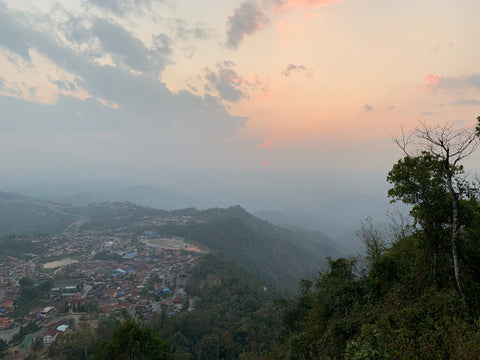
We traveled into these rural mountains in January of 2020 to meet the makers and check out the trees. Their garden is only 30-40km from the southern Yunnan border, and yet, due to difficult border crossings, we actually had to approach from the south, flying into Vientiane and taking busses all the way north, through Vang Vieng and Luang Prabang, and finally to Phongsali.
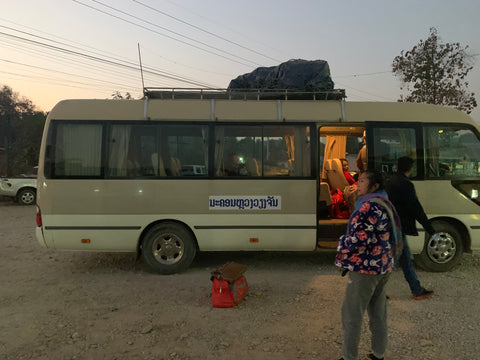
The bus from Luang Prabang to Phongsali is a 14 hour ordeal of twisted mountain roads and a lot of sick passengers. We left at 2 pm and arrived around 4 am, the entire time the blaring Laotian pop songs barely covered up the sound of retching passengers. The bus stop was about a 45 minute walk outside of the small town, and it being a mountain hamlet, there were no electrical lights to guide us by. Instead, we followed the road the bus driver said would take us to the heart of the town, accompanied only by the stars and a few lightly-sleeping dogs.

After a few hours of bleary-eyed rest, we rented a motorcycle and headed down the dirt roads to the village of Ban Komen. Parking the motorcycle on the side of the road where a few tall tea trees stood sentinel, we wandered through the picker’s paths until we came upon a production facility.
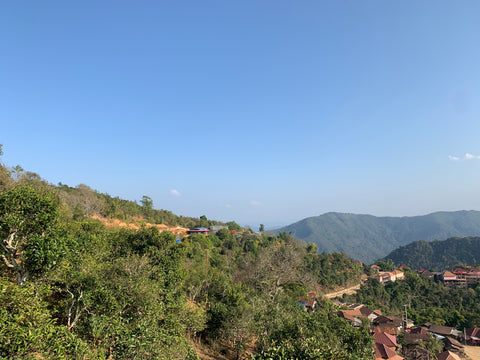
Talking briefly with the young producer’s two sons, we took a tour of the garden, sampled their teas, and observed the kill-green and sun drying processes, we learned that the two sons and a few other village boys handle most the tea processing while all the other villagers harvest the teas and sell their loose leaves to the Keosuyaping family for processing.

These teas are all made from what we would - without hesitation - call ancient trees (100+ years). And the tea is all grown, made, and sold by the Keosuyaping family. The environment, production, and people were all up to our standard, and we are proud to collaborate with the Keosuyaping family and offer their teas to the Western market.
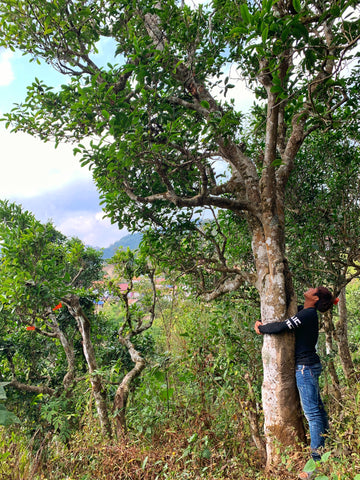
This Laos Green Tea has all the thick, powerful flavors of fresh gushu puer. The mouthfeel is thick and heavy, while the huigan quick and deep. The fragrance of this tea is immediately rich and savory, with very little floral or sweet notes to it. Talking to the farmers, this tea is often sold to Chinese tea makers to include in their old-tree cakes, and the reasoning behind this is easy to taste. While grown on the wrong side of the border, this tea has a depth of flavors that recently cultivated tea simply lacks.
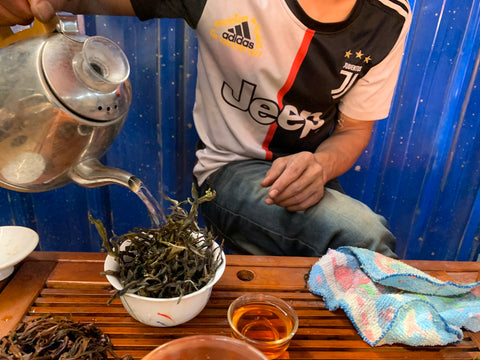
Great description! Sounds like the teas you got in Laos are as good, or better, than many of the teas you purchase in China. And probably more reasonably priced??